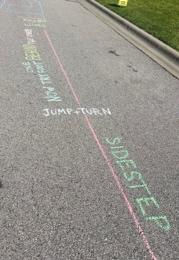Sacroiliac Joint (SI) Dysfunction: Diagnosis of Exclusion?
- All Care Therapies

- May 26, 2022
- 2 min read
Offering HESCH Method: Treating Sacroiliac Joint Dysfunction and Lumbopelvic Pathomechanics
Introduction: A very common PT referral is for SI pain and/or dysfunction” which can be attributed due to apparent instability and/or even lack thereof. The SI is a stable joint that is surrounded by a multitude of ligaments as it is utilized by the body to transmit forces not only in but throughout the joint itself particularly when we walk, run, jump/land, and often time when loading throughout one leg. Common painful areas near our tailbone and can refer into groin and upper thigh region. Oftentimes pain attributed to this area results in direct treatment, often invasive, such as with fusion of the joint and/or injection into the joint to reduce pain/inflammation. This, however, can be much like placing a band-aid
over a wound without treating it, which is why pain and dysfunction of the SI often returns and is not treated successfully. Studies are showing that the SI does not exist in isolation and actually needs movement, contrary to utilization of surgical fusion, as it provides the body as shock absorber and force transducer which can affect other parts of the body, in particular the lumbar spine and hip/pelvis.
What is HESCH Method?: It is a direct treatment approach that utilizes viscoelastic creep model (low load, long duration mobilization technique) to restore normative joint mobility. In particular, it can target annoying “SI pain” that can commonly be referred pain or disturbance from the lumbopelvic region or any other region of our body presenting with faulty movement or dysfunction. One of the principles is screening the hip prior to any treatment of the SI with three simple movements. If dysfunction in any of the three is noted, simple self-treatment techniques can be administered to reduce pain levels and influence motion in and thru the SI (****see below techniques****).
Hip Internal Rotation Self Mobilization/Stretch
- Common to see more restricted/tight on right side as we live in a predominantly right sided
world but can also be more restricted on left.
- Check both sides on how toes generally rest when laying on back. You may see one side “toe out” more than the other. However, feel free to administer to both sides.
- Place half foam roller or simply roll up towel and place under lateral hip of restricted side(s)
- Lay for 3-5 min or as tolerated
- Should be enough to turn feet upward or inward

Anterior Hip Glide Self Mobilization/Stretch
- Restricted hip extension is common particularly for those who sit at computer/desk
- Check both sides for restrictions
- Restricted side, place half foam roller or towel under gluteal/fold crease as shown
- Hug opposite knee to chest if possible or bend knee and rest on table while allowing stretching leg to relax over edge of table/bed
- Hold 3-5 min or as tolerated




Comments